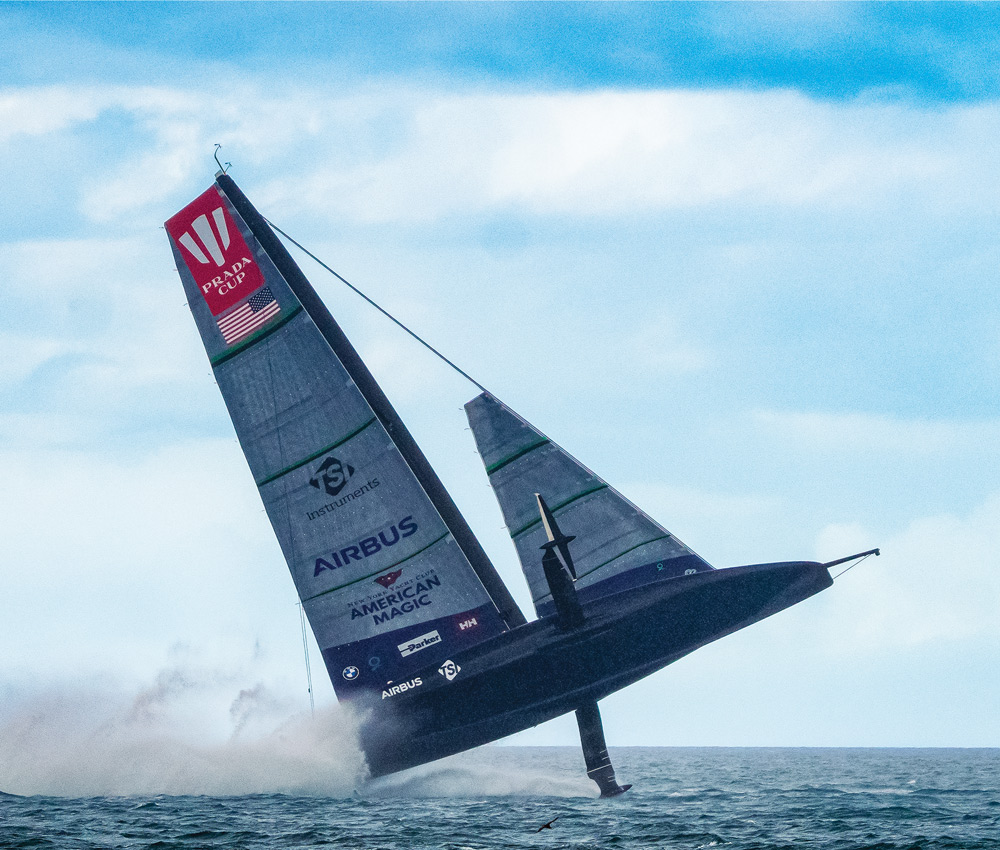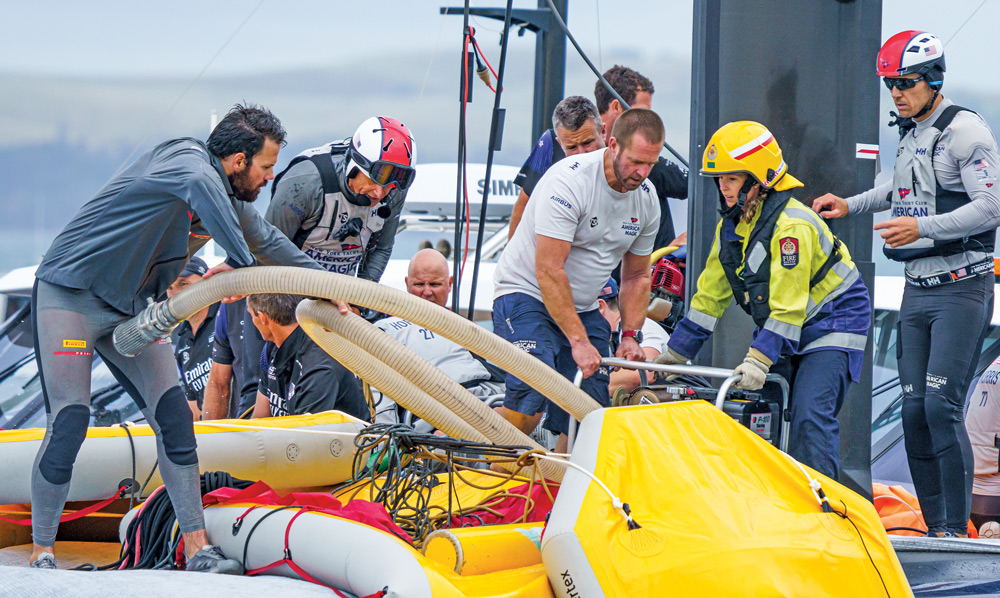No Magic Touch
In the most extreme Cup ever sailed, a promising American challenge flops as a small fleet pushes the limits of technology
It was a scene that looked more like a futuristic movie than one from a sailing racecourse. Patriot, the New York Yacht Club’s AC75 challenging for the America’s Cup, bucked out of Auckland’s Hauraki Gulf, popping a wheelie with the bow more than 20 feet in the air. Crashing down, it rolled onto its side as the sailing world held its collective breath.
Helmsman Dean Barker’s words delivered in a normal voice to his teammates right before the crash sounded oddly calm given the impending doom. “I’ve lost the rudder.”

But what American Magic lost was far more. Although the team would make a herculean effort to repair the damage and hope remained that they could pull off the kind of comeback story the Cup loves, it turned out that what the team had lost was the chance to face Emirates Team New Zealand in the America’s Cup.
The capsize became the defining moment in a promising challenge. Back in the America’s Cup game for the first time in nearly 20 years, the New York Yacht Club put together a well-funded program, bringing together sailing elites both behind the scenes and on board, even wooing veteran America’s Cup helmsman Barker to join the team. The team was the first of the challengers to arrive in New Zealand and quickly took to the water to make up for the lost time experienced by all the teams when two of the so-called World Series events in the lead-up to the Cup were canceled due to the Covid-19 pandemic.
Without those events, the first time American Magic’s Patriot would line up against the paltry group of challengers—just two other teams, Italy’s Luna Rossa Prada Pirelli and England’s Ineos Team UK came to fruition—was at a mid-December regatta in New Zealand that included Cup defender Team New Zealand.

American Magic finished the December regatta looking not just like the challenger to beat, but also a team that could stand a real chance of upsetting the Kiwi’s defense.
“You go out to race with expectations and it was good to see that we had performance on the day and at the same time it was also good to see that we had room for improvement,” American Magic Skipper and Tactician Terry Hutchinson said prior to the start of challenger racing.
During the break between the December event and the start of the Prada Cup, the new name for the challenger series to determine who will face Team New Zealand in the America’s Cup, every team made improvements to both the boat and their crew work. As is common in classes in which the boats are still developing, the learning curve is steep and small changes can make huge performance gains.
When the three challengers hit the water in January, it was clear that some teams were climbing the learning curve faster than others. Ineos Team UK, led by skipper Ben Ainslie, was unrecognizable as it went on to flip the scoreboard from the December regatta and go undefeated during the round robins.
Even former America’s Cup skipper and press conference moderator Bruno Troublé asked Ainslie after the first day of racing if he was sure he was sailing the same boat.
“It’s definitely the same boat, it’s just had quite a few modifications,” Ainslie said. “The boat is obviously going a lot better.”

Comments